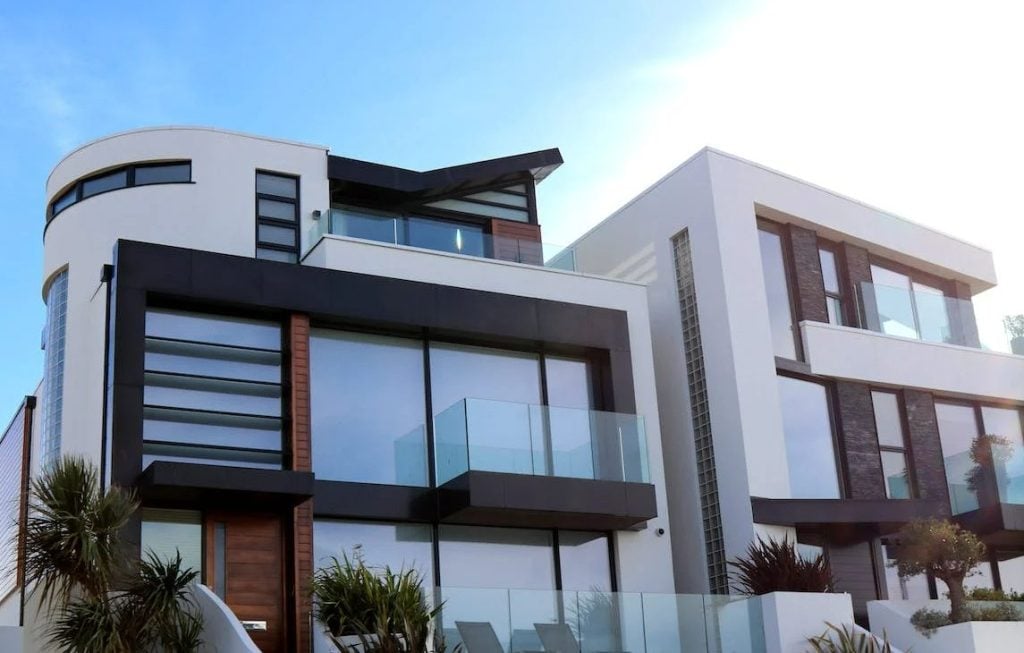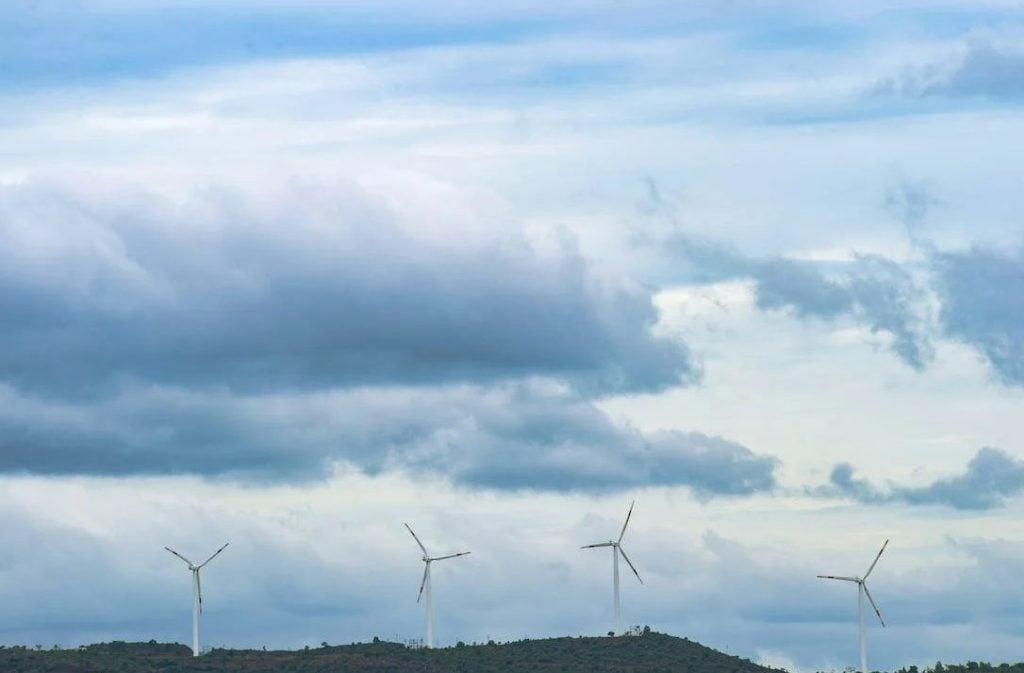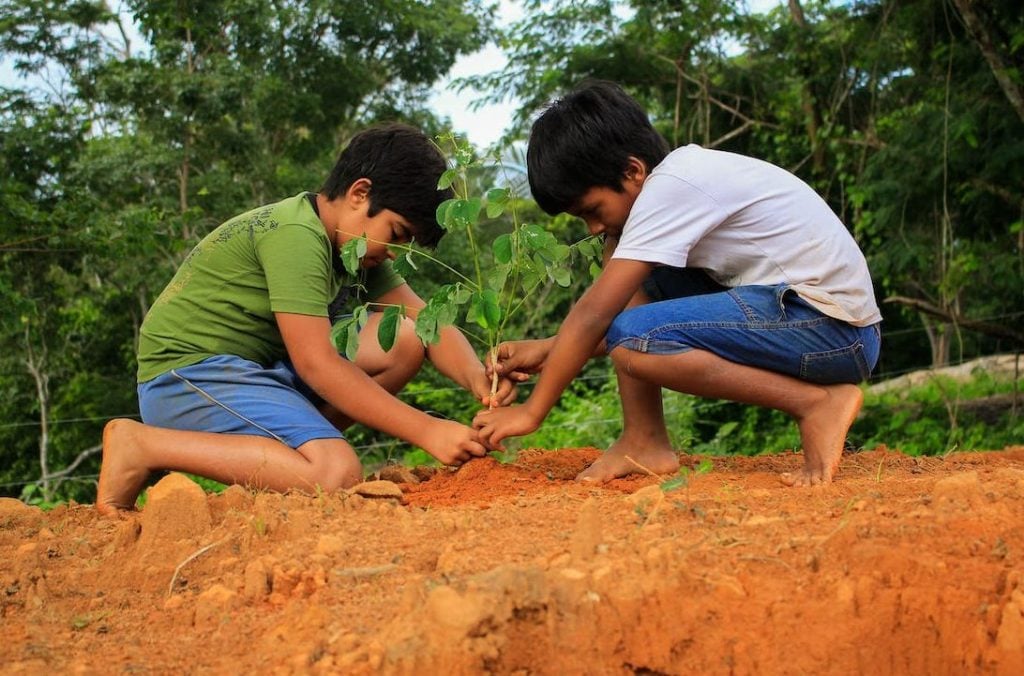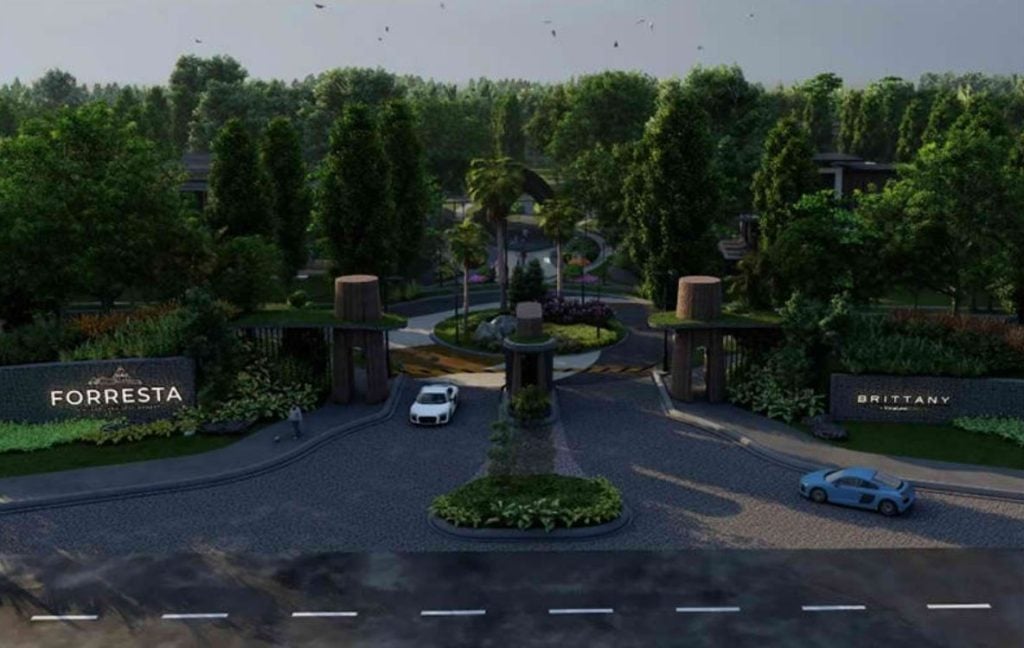BLOGS
10 Real Estate Sustainability Trends to Watch Out For
Sustainability in real estate involves creating buildings that are energy-efficient, resource-efficient, and environmentally responsible. This means using renewable energy sources, reducing waste, conserving water, and creating healthy living spaces.
As a real estate developer, we know the importance of staying up-to-date with the latest trends, especially when it comes to sustainability. Over the years, the real estate industry has evolved to embrace sustainable practices that help reduce environmental impact and improve the quality of life for occupants.
In this article, we will walk you through some of the most important sustainability trends to watch out for in real estate.
Understanding Sustainability Trends in Real Estate
Sustainability trends in real estate are constantly evolving, and it’s important to stay up-to-date with the latest developments. A good starting point in starting a key operational sustainability initiative is to first understand its principles and the benefits of incorporating a sustainability strategy in property development.
Key Principles in Sustainability in Real Estate
There are several key principles that underpin sustainable operations in real estate. They are as follows:
Energy Efficiency
Energy efficiency is a principle that involves using less energy to carry out tasks or achieve goals, which helps conserve resources and reduce carbon emissions. Sustainable real estate development places a strong emphasis on energy efficiency by implementing technologies and practices that promote effective resource use and lower emissions. This can include measures such as using energy-efficient appliances, installing insulation, optimizing HVAC systems, and utilizing renewable energy sources like solar power.

Conservation of Natural Resources
Conservation of natural resources is a crucial principle for sustainability in real estate. It involves the responsible and efficient use of resources to minimize environmental impact. This principle is closely linked to climate change, as the real estate sector is a major contributor to greenhouse gas emissions.
Similarly, biodiversity risk is another aspect related to natural resource conservation in real estate. The real estate sector has a significant impact on biodiversity through habitat destruction, overexploitation, and pollution. Integrating biodiversity considerations into real estate development can help mitigate biodiversity loss and support ecosystem resilience.
Improved Indoor Air Quality
Improved indoor air quality (IAQ) is a principle for sustainability in real estate that focuses on enhancing the air quality within buildings to promote the health and well-being of occupants. It’s particularly important in addressing the high percentage of homes without adequate insulation and the resulting health issues.
Poor IAQ has been linked to respiratory ailments and other health problems. By implementing strategies to improve IAQ, such as the use of technologies like ultraviolet germicidal irradiation (UVGI) for disinfection, real estate properties can create healthier environments for occupants. Improved IAQ can also lead to reduced energy consumption, reduced carbon emissions, and improved air quality, making it a crucial aspect of sustainable real estate development.
Sustainable Community Planning
Sustainable community planning is a principle for sustainability in real estate that involves developing and managing communities in a way that promotes social, economic, and environmental sustainability.
This approach prioritizes the long-term well-being of communities and the natural environment. It aims to create livable, walkable, and resource-efficient communities that reduce carbon emissions, conserve natural resources, and support biodiversity.
Sustainable community planning involves using tools like legislation, policies, guidelines, and monitoring indicators to guide development decisions. It also involves considering the social challenges of sustainability, such as equity and accessibility, to ensure that all members of the community benefit from sustainable development.

Benefits of Incorporating Sustainability Strategies in Real Estate Development
There are several benefits to meeting sustainability targets in real estate development. They are as follows:
Reduced Environmental Impact
Reducing environmental impact is a key benefit of incorporating sustainability in real estate. Sustainable practices, such as using environmentally friendly materials and implementing energy-efficient technologies, help minimize the consumption of resources and reduce greenhouse gas emissions.
By reducing the environmental footprint of buildings, sustainable real estate development aligns with the principles of resource conservation and environmental stewardship, ensuring a more sustainable future for both the real estate industry and the planet.
Increased Property Value
Incorporating sustainability in real estate can lead to increased property value, enabling real estate developers and property owners to enhance the financial value of their assets. Green buildings, for instance, require fewer resources, resulting in cost savings and increased property value. Similarly, sustainable construction promotes improved health by using sustainable materials that purify the air and minimize pollution.
Lower Operating Costs
By implementing energy-efficient technologies and practices, such as utilizing renewable energy sources, improving insulation, and optimizing water usage, real estate owners can significantly reduce their energy and water consumption. This leads to lower utility bills and operational expenses. Sustainable buildings also often require less maintenance and repair, resulting in further cost savings.
Health Benefits
Sustainable buildings prioritize the use of materials and systems that enhance air quality, reducing the presence of pollutants and allergens. This can help prevent respiratory issues, allergies, and other health problems associated with poor indoor air quality.
By focusing on sustainable practices, such as proper ventilation, filtration systems, and the use of non-toxic building materials, occupants can enjoy a healthier and more comfortable living or working environment.

10 Real Estate Sustainability Trends to Consider
The pressure for real estate companies to pledge sustainability commitments is rapidly increasing, especially due to the people’s increasing environmental awareness and calls for a more sustainable future.
In fact, an increasing number of countries, even including developing countries like the Philippines, are requiring a mandatory sustainability reporting standards in the coming years, showing that sustainable development may not just be a trend but is the future for businesses worldwide.
Sustainability Trends #1: Circular Economy Models
Circular economy models are one of the key trends in real estate sustainability. They involve using resources in a closed loop system instead of a linear pattern.
This means designing buildings for disassembly and reuse, incorporating sustainable building practices such as natural light and ventilation, optimizing space layout, and using shared spaces and resources within buildings to reduce environmental impact and improve quality of life. Smart technology can also monitor and automate energy usage to achieve higher efficiency.
Implementing a circular economy benefits both the environment and the bottom line, and examples of circular economy in real estate include passive houses and Cradle to Cradle design. Community engagement is also important for creating sustainable and resilient communities.
Sustainability Trends #2: Sustainable Supply Chains
Sustainable supply chains in real estate sustainability refer to the implementation of environmentally and socially responsible practices throughout the supply chain processes of the real estate industry. This involves considering the environmental impact of sourcing raw materials, transportation logistics, construction practices, and waste management. Sustainable supply chains aim to reduce carbon emissions, promote energy efficiency, and minimize waste generation.
Sustainability Trends #3: Green Lease and AI Lease Extraction
Green leases refer to lease agreements that incorporate environmental and energy-saving measures. These leases contain added commitments to improve the environmental impact of the property, such as implementing energy-efficient technologies or renewable energy sources. Green leases help property managers and landlords meet tenant demand for sustainable properties and contribute to lower energy costs and improved living conditions.
AI lease extraction, on the other hand, is a technology-driven process that involves the extraction and organization of critical lease information using artificial intelligence. AI lease extraction software pulls necessary information from lease documents and provides accurate data for reporting purposes.
AI lease extraction can support green lease reporting by collecting and managing environmental and sustainability data to meet ESG targets and regulatory requirements. It enables organizations to access and improve their sustainability performance.

Sustainability Trends #4: Pledge for Carbon Neutrality
A carbon neutrality pledge in real estate refers to a commitment made by real estate companies or organizations to reduce their greenhouse gas emissions to net-zero levels. This means that the amount of carbon dioxide and other greenhouse gases emitted by the buildings and operations of the real estate entities is balanced or offset by an equivalent amount of emission reductions or removals elsewhere.
The pledge typically involves implementing the following sustainability strategies:
- Focus on reducing net emissions by implementing energy-efficient technologies and practices, such as heat pumps, LED lighting, and renewable energy sources. This helps decrease energy usage and overall greenhouse gas emissions.
- Landlords and tenants can consider purchasing renewable energy certificates (RECs) and carbon offsets to compensate for any remaining emissions after implementing on-site reductions.
Sustainability Trends #5: Net-Zero Buildings
Net-zero buildings in real estate refer to buildings that produce as much or more energy than they consume, resulting in a net-zero carbon footprint. These buildings use renewable energy sources to meet their energy needs and implement energy-efficient technologies and practices to reduce energy consumption.
The goal of net-zero buildings is to balance greenhouse gas emissions with removal from the atmosphere, thereby mitigating climate change and reducing environmental impact. Net-zero buildings are becoming increasingly important in the commercial real estate industry due to regulatory pressures, such as emissions reduction requirements and the need to address climate change.
Real estate stakeholders can work towards achieving net-zero buildings by implementing the following strategies:
- Retrofitting existing buildings: Upgrade the insulation, windows, and HVAC systems of older buildings to improve energy efficiency and reduce carbon emissions. This can be done through measures like installing double-glazed windows, adding insulation, and optimizing HVAC systems.
- Investing in greener materials for construction: Choose sustainable and low-carbon materials for the construction and renovation of buildings. This includes using recycled materials, sustainable timber, and low-carbon concrete alternatives. Additionally, prioritize sustainable construction practices and waste management.
- Conducting energy audits: Perform regular energy audits to identify areas of improvement and energy-saving opportunities in the building. This helps in understanding the current energy usage and guides the implementation of energy conservation measures.
- Prioritizing operational efficiency: Optimize the building’s operations by implementing smart building automation systems, monitoring energy usage, and optimizing water consumption. This ensures efficient resource management and reduces energy waste.

Sustainability Trends #6: Smart Building Automation
Smart building automation in real estate refers to the use of advanced electronic devices and software to control and manage various systems within a commercial or residential property. This technology improves efficiency and energy savings. With the implementation of connected devices and sensors, smart buildings offer benefits such as energy optimization, facility maintenance automation, and enhanced building construction quality.
Smart technology can maximize space, reserve energy, and manage building operations remotely, and it can also be used for virtual property visits. The Internet of Things (IoT) is a key component of smart building automation, with connected systems offering energy savings, space optimization, and proactive maintenance detection.
Sustainability Trends #7: Regenerative Design
In real estate sustainability, regenerative design refers to an approach that aims to create buildings and developments that have a net positive impact on the environment and human well-being.
Unlike traditional sustainable design, which focuses on minimizing harm, regenerative design goes a step further by actively restoring and revitalizing natural systems. It involves strategies that not only reduce resource consumption and waste but also actively contribute to the regeneration of ecosystems and communities.
The goal of regenerative design is to create buildings and developments that give back more than they take, ultimately creating a thriving and sustainable future. The concept of regenerative design is gaining traction in the real estate industry as a more holistic and proactive approach to sustainability.
Sustainability Trends #8: Circular Water Systems
Circular water systems in real estate sustainability refer to the implementation of strategies and technologies that aim to minimize water waste and promote water reuse within the built environment. These systems adopt a circular economy approach, which focuses on reducing water consumption, maximizing water efficiency, and recycling water resources.
By integrating measures such as rainwater harvesting, greywater reuse, and water-efficient fixtures, circular water systems help mitigate water stress, reduce reliance on freshwater sources, and contribute to a more sustainable and resilient water management in real estate developments.

Sustainability Trends #9: Decentralized Energy Generation
Decentralized energy generation in real estate sustainability refers to the practice of producing energy on-site or near the point of consumption, rather than relying solely on centralized grid networks.
It involves the integration of distributed energy resources (DERs) such as microgrids, renewables, energy storage, and controllable loads into buildings and developments. This approach brings several benefits, including cost savings, environmental advantages, and enhanced energy resilience.
By generating energy locally, real estate properties can reduce their reliance on traditional power sources and minimize transmission losses. Decentralized energy systems also contribute to the transition to clean energy and help achieve decarbonization goals.
Sustainability Trends #10: Energy Storage Solutions
Energy storage solutions in real estate sustainability refer to the use of advanced technologies and systems to store excess energy for later use, thereby improving energy efficiency and reducing environmental impact. These solutions typically involve the use of battery technologies, such as lithium-ion batteries, to store energy generated from renewable sources like solar or wind power.
By storing energy during periods of low demand or high generation and using it during peak demand periods, energy storage systems can help optimize energy usage, reduce reliance on the grid, and increase the overall sustainability of commercial real estate properties.

Forresta Villar City: Luxurious Housing With Comprehensive Sustainability Practices
As real estate developers, it’s our responsibility to design buildings that are sustainable and environmentally responsible. By incorporating sustainable strategies into our projects, we can reduce our environmental impact, improve the quality of life for occupants, and create buildings that are in high demand.
At Foresta Villar City, we’re committed to adhering to the sustainability agenda and to different sustainability regulations to help contribute in solving our current climate crisis and help protect and promote a healthier planet for a more sustainable future. Our ultra luxury lot for sale in Villar City features premium and luxury houses with construction methods that adhere to sustainability regulations and practices.
Live a luxurious and comfortable life now while reducing your carbon footprint with Brittany Corporation. Learn more about us by visiting our LinkedIn profile and YouTube channel.
Suggested Read: How Brittany Corporation Paves The Way For Sustainable Real Development
Suggested Read: Sustainable Design That Won’t Ruin Your Home’s Charm
Suggested Read: What You Need To Know About Condo Ownership
Suggested Read: Pre-Selling Vs. Ready-For-Occupancy Homes
Suggested Read: Sustainability in the Real Estate Industry



















